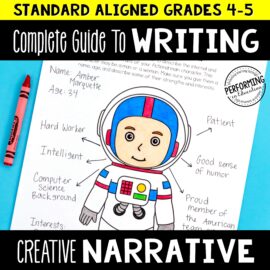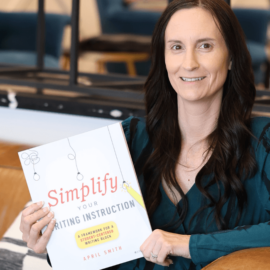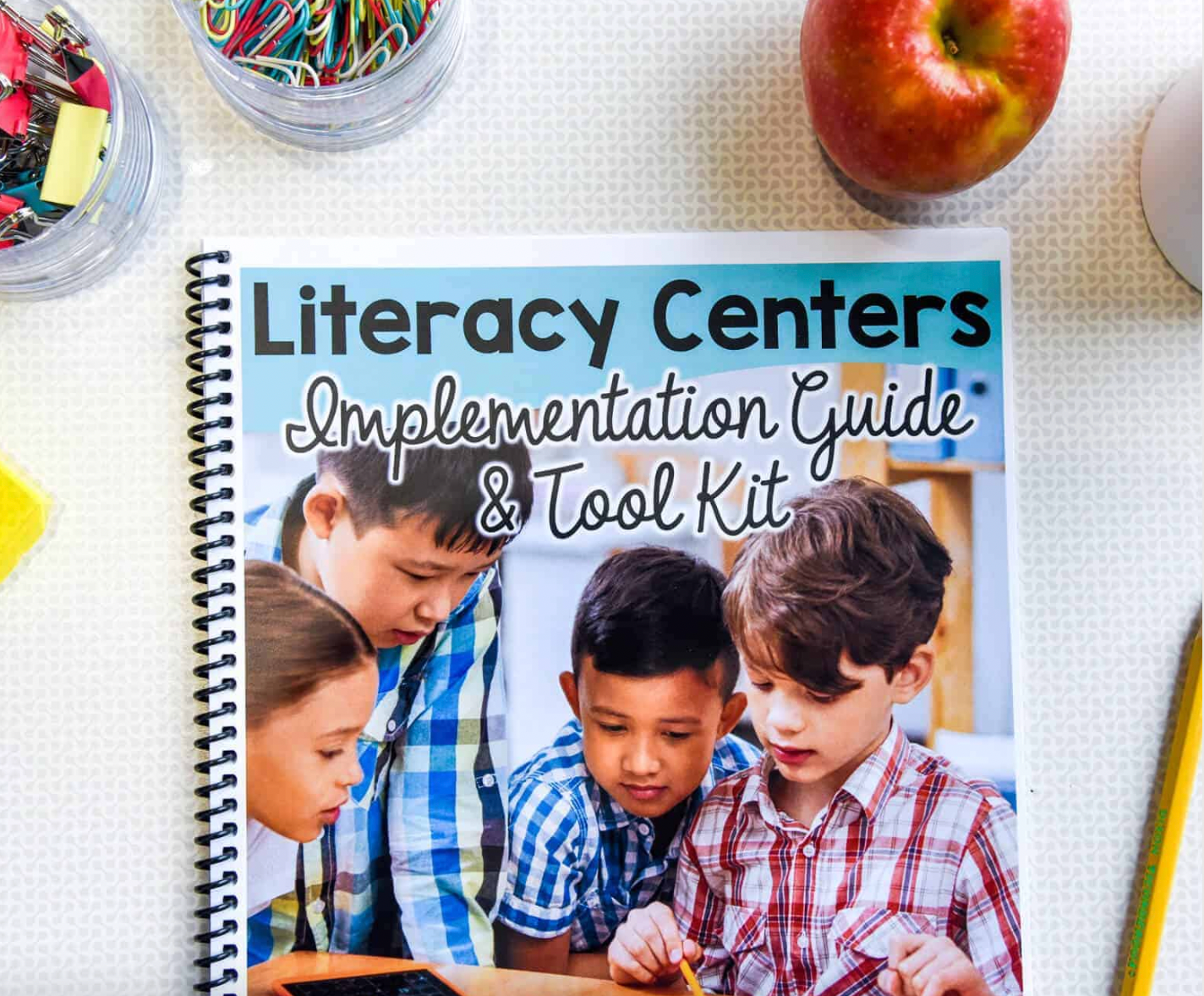I love using personal narrative writing to kick off the school year. It’s a great way to get to know your students as people, but equally important, as writers. Personal narratives are often less intimidating for students because they get to write what they know.
Today I’m sharing my 5 favorite mini-lessons for personal narrative writing, great for using during your first month of school. These all come from my highly-rated Complete Guide to Writing Series. Scroll to the end for a free sample!
Elements of a Personal Narrative

To set the stage for this unit, I always begin with a mini-lesson reviewing the elements of personal narrative writing. Hopefully, your students will already be familiar with many of these, such as characters, setting, and plot. So, I like to emphasize elements such as point of view and descriptive language. These essential parts of a personal narrative piece are important for students to be aware of before they begin writing.
It’s also critical for students to recognize that a personal narrative should be focused on a small, meaningful moment in time. Many students often select a large stretch of time, such as an entire week of vacation, to write about. Instead, I show them how to choose a small but significant moment, and then later model how to stretch that moment into a captivating piece of writing.
Story Outline and Introduction
Students can get stuck when it comes to beginning their personal narrative. To keep them on track, we plan a story outline that charts the events of the narrative from beginning to end. I remind them that the outline should start as close to the main action or event as possible.
Here’s the teacher model I use about meeting a new friend while on a cruise ship:

Next, I do a 10-minute mini-lesson where we discuss how the introduction explains how you got to where your sequence of events starts. I model the beginning of my personal narrative piece on an anchor chart. When my class had 1:1 devices, I gave them a digital copy of my models (see below).

I always provide my students with an organizer that looks just like mine. The first time we do this, their introductions look very familiar… almost exactly like mine. That’s totally ok. As we do more personal narrative writing after this essay, they will start to branch out and get more creative.
Character Development
This personal narrative prompt asks students to write about a time they met a special friend. So most students will have two main characters to focus on: themselves and their friend. During the brainstorming phase, we use this chart: students can draw a picture on the left side and add character traits, hobbies, and interests on the right side. I focus mainly on internal character traits, but students can add physical descriptions too.

Adding Dialogue
Dialogue is an essential part of personal narrative writing. It adds authenticity and makes the writing more interesting to read. But many students struggle with using punctuating dialogue correctly.
As students begin their rough draft, I always include a mini-lesson focused on dialogue. We review the rules for how to punctuate dialogue, including:

- Make a new line of dialogue every time a new speaker talks
- Use quotation marks around the words being spoken
- Choose a fitting dialogue tag or attribution
- Use the appropriate punctuation depending on whether the tag is at the beginning, middle, or end of the dialogue
These bookmarks (included in the free sample below) are perfect for students to pull out when they get stuck. Some of my students like to expand their attribution word list, adding new examples they find as they’re reading. One 5th grader reached a total of 100 “words to use instead of said”––that’s impressive!
Strong Endings
In this personal narrative mini-lesson, , we discuss how a personal narrative conclusion should provide a satisfying resolution. We brainstorm a list of ways to do this well, such as:
- Include a lesson you learned from the experience
- Reflect back on how you feel about this experience now
- Tell how this experience affected your plans for the future
- Give advice to your reader relating to the experience
- Ask an important question about the experience.
Finally, I model using 2 or 3 of these strategies in different versions of my own conclusion. Students vote on which strategy is most effective. Then, they get a chance to write their own conclusion using one or more of the strategies above. It takes practice, but over time you will see an improvement in the quality of their conclusions!

Are you interested in trying out some of these mini-lessons? You can grab a free sample of my Personal Narrative No-Prep Unit from the Complete Guide to Writing Series by clicking on the link below.
Like what you see? Check out the full bundle, which also includes units on Creative Narrative, Explanatory Writing, Informational Writing, and Opinion Writing!





